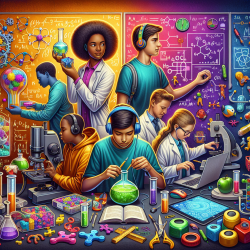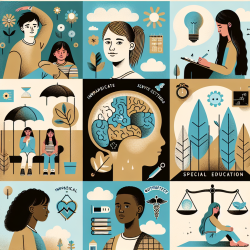The landscape of education is continually evolving, and with it comes the need to embrace diversity in all its forms. One area that holds untapped potential is the recruitment and retention of autistic talent in Science, Technology, Engineering, Mathematics, and Medicine (STEMM). A recent study titled "Recruiting and Retaining Autistic Talent in STEMM" sheds light on how schools can benefit from this unique talent pool.
Understanding the Challenges
Autistic individuals often face significant barriers in both educational and professional settings. The research highlights that autistic adults have the highest unemployment rate compared to other groups, regardless of disability status. This is largely due to systemic challenges that fail to accommodate different ways of thinking and communicating.
In academia and the workplace, failing to account for these differences can lead to interpersonal rifts and increased feelings of isolation among autistic individuals. This isolation is particularly pronounced in STEMM fields, where effective communication is crucial.
The Autistic Advantage
Despite these challenges, autistic individuals possess unique strengths that can be incredibly beneficial in STEMM fields. The study emphasizes a shift from a deficit model to a strengths-based approach. Autistic individuals often exhibit autonomous and lateral thinking, creativity, intense focus on tasks, attention to detail, and heightened skills such as memory and computation.
These strengths make them well-suited for roles that require precision and dedication—qualities highly valued in STEMM fields. By leveraging these strengths, schools can enhance their programs and outcomes.
Strategies for Inclusion
- Create an Inclusive Environment: Schools should implement systemic changes to foster inclusivity. This includes adopting empathetic communication styles and providing necessary accommodations.
- Bidirectional Training: Encourage training programs that facilitate understanding between autistic and non-autistic individuals. This helps reduce misunderstandings and fosters a supportive environment.
- Mentorship Programs: Establish mentorship programs that focus on the growth of autistic students. Mentors should be trained to approach mentorship with humility and understanding.
- Promote Autism Humility Training: Replace traditional autism competence training with humility training to reduce stereotypes and biases.
The Role of Online Therapy Services
Online therapy services like those provided by TinyEYE can play a crucial role in supporting autistic students. These services offer flexible support tailored to individual needs, helping students overcome barriers to success in STEMM fields.
Conclusion
The recruitment and retention of autistic talent in STEMM are not just about meeting diversity quotas; it's about recognizing the value that diverse perspectives bring to education and innovation. By implementing inclusive practices and leveraging online therapy services, schools can unlock the full potential of autistic students.
To read the original research paper, please follow this link: Recruiting and retaining autistic talent in STEMM.










